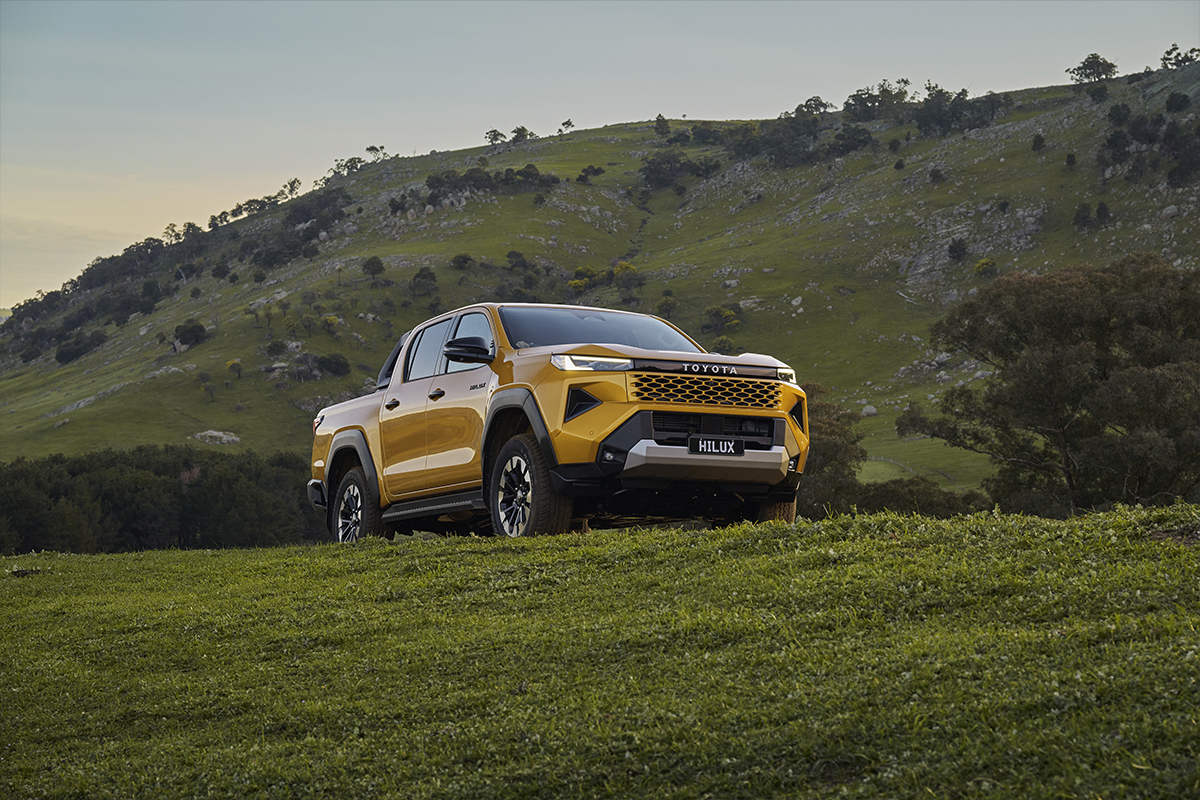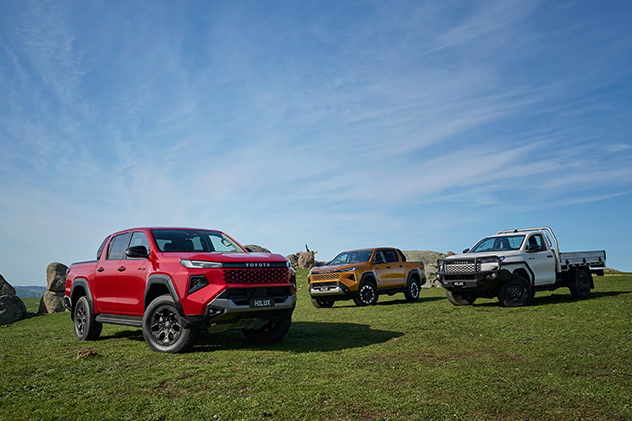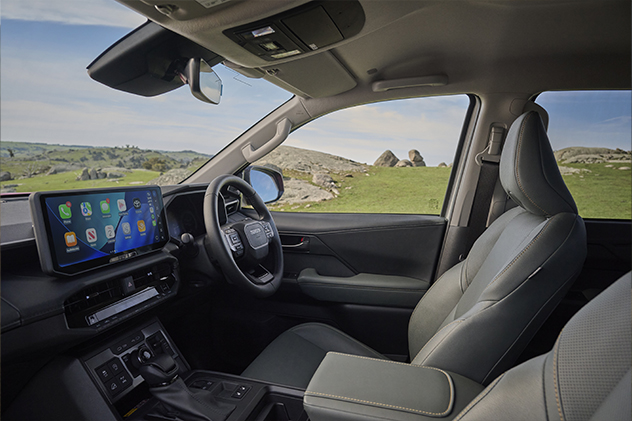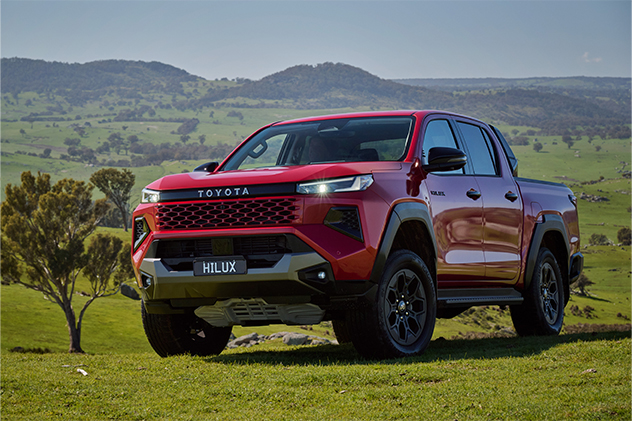
Toyota Australia has ripped the covers off the ‘new-generation’ Toyota HiLux, revealing an expanded line-up comprising diesel, electric and hydrogen fuel-cell powertrain options, a revised design, and fresh technology.
Set to arrive in Australian showrooms from December 2025, the 2026 Toyota HiLux has been anointed a ninth-generation version of the iconic model, even though it is based on the same ‘Innovative International Multi-Purpose Vehicle’ (IMV) underpinnings dating back to 2004.
In any case, the new model will compete with a heady mix of utes including the Ford Ranger, Mitsubishi Triton, Nissan Navara and Kia Tasman, not to mention a slew of Chinese competitors such as the BYD Shark, GWM Cannon, LDV T60 and MGU9, not to mention many more in the pipeline.

A reworked front end herald’s the HiLux’s physical changes, with higher-set headlights, a body-coloured mesh grille and an angular front bumper design. From the A-pillars to the back of the cabin, the design carries over from the eighth-generation HiLux (first introduced in 2015).
Toyota has taken a leaf from Ford and Kia’s book by integrating a step on the lower section of tray immediately behind the wheel arches to enable easier access into the tray area, which is otherwise unchanged in dimension.

Inside, the ninth-generation Toyota HiLux employs a 12.3-inch touchscreen infotainment system and a row of physical switches for straightforward access to functions, including air-conditioning. A digital instrument cluster lives in front of the steering wheel, measuring either seven inches or 12.3 inches depending on grade.
Elsewhere inside the cabin there’s a new steering wheel design, gear selector and switchgear, plus the introduction of an electric parking brake on some models. Toyota says it has reshaped the front and rear seats for improved comfort, though the carryover exterior design means interior proportions are unchanged.

For those all-important powertrain options, Toyota has confirmed there will be 16 different diesel model grades available from the December launch. A battery-electric powered HiLux will follow in the first quarter of 2026, while a hydrogen fuel-cell (FCEV) option will join the HiLux fleet from 2028.
For now, the 2.8-litre turbo-diesel four-cylinder will be the only ICE option, with Toyota deciding to drop the predecessor’s 2.4-litre diesel and 2.7-litre petrol options.
Happily, the new HiLux will continue to be offered with both six-speed automatic and six-speed manual transmissions – allowing it to stand alone in a segment now almost exclusively limited to automatic gearboxes.
Outputs on the diesel remain unchanged at 150kW/500Nm (with the previous GR Sport at 165kW/550N) for automatic models and 150kW/420Nm for manual-equipped versions.

Toyota says it has developed two suspension tunes that will be applied across the HiLux range – one suited to dual-cab models and extra-cab models, while the other will be orientated towards single-cab workhorses. Electric power steering also replaces the hydraulic steering system in the ageing predecessor, while rear disc brakes are now standard on the SR5 grade and up.
Even though the HiLux’s ladder frame chassis is fundamentally the same, Toyota says there are new hydraulic engine mounts and 'shear-type' cabin mounts, claimed to reduce vibration and improve ride comfort.
As before, the HiLux will be offered in in single-, extra- and dual-cab body styles, with 4×2 and 4×4 drivelines, and in WorkMate, SR, SR5, Rogue and Rugged X model grades. A flagship GR version will join the line-up later, presumably some time in 2026.
Pricing will be confirmed closer to launch, although it is expected the revisions will impose moderate increases across the board.